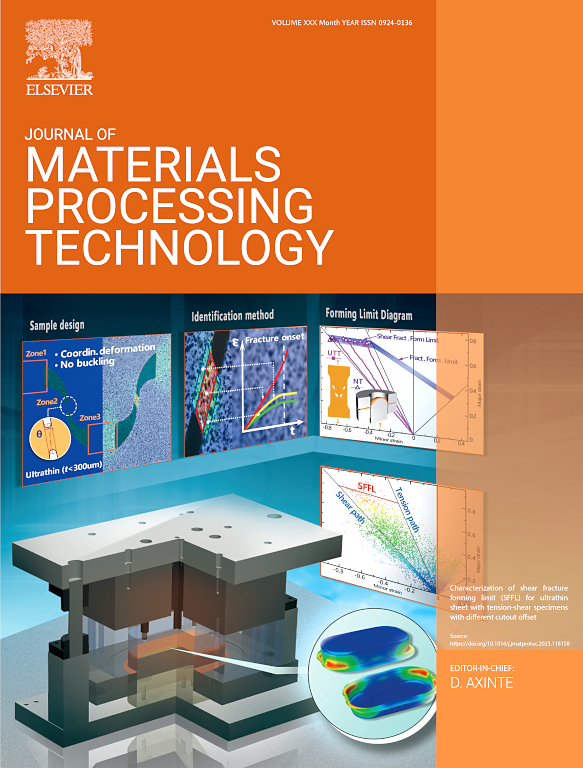锁孔激光焊接过程诱导后坐力的实验和数值研究:验证多物理场过程模拟和建模假设的见解
IF 6.7
2区 材料科学
Q1 ENGINEERING, INDUSTRIAL
Journal of Materials Processing Technology
Pub Date : 2025-05-26
DOI:10.1016/j.jmatprotec.2025.118895
引用次数: 0
摘要
在小孔激光焊接熔池的驱动因素中,汽化诱发的反冲压力是最主要的驱动因素。实验测量了铝和铜激光焊接过程中产生的后坐力。使用定制的测量装置测量由后坐力引起的试样位移,然后通过有限元分析确定试样位移。建立了激光焊接过程的多物理场计算流体动力学(CFD)模型。校正后,利用这些模型预测后坐力及其对各工艺参数的依赖关系。当只考虑作用于汽化发生区域的反冲压力,而不考虑模型中的气相时,总反冲力被低估了。考虑到形成的气体在上升和离开锁孔时对总后坐力的贡献,根据预测的由于蒸发和冷凝的净质量流量计算总后坐力。该简化模型的预测结果与实验结果吻合较好,表明随着激光功率的增加,所观察到的后坐力的一致性可能是由于相应的冷凝速率的增加。这突出了理解汽化气相行为的重要性,以确定激光焊接过程建模中的适当简化和假设。本研究的发现支持了多物理场过程模型的发展和验证,进一步推进了相关建模近似的知识。本文章由计算机程序翻译,如有差异,请以英文原文为准。
Experimental and numerical investigation of process-induced recoil force in keyhole laser welding: Insights for validating multi-physics process simulations and modelling assumptions
Among the various driving forces involved in the molten pool during keyhole laser welding, the vaporization-induced recoil pressure is the dominant one. This study experimentally measured the process-induced recoil force during laser welding of aluminium and copper. A customized measurement setup was used to measure the specimen displacement caused by the recoil force, which was then determined by means of a finite element (FE) analysis. Furthermore, multi-physics computational fluid dynamics (CFD) models of the laser welding process were developed. After calibration, these models were used to predict the recoil force and its dependence on various process parameters. When only the recoil pressure acting on regions where vaporization occurs was considered, excluding the gaseous phases in the model, the total recoil force was underestimated. To account for that the formed gas contributes to the total recoil force as it rises and exits the keyhole, the total recoil force was calculated based on the predicted net mass flow due to vaporization and condensation. This simplified model showed good agreement between predicted and experimentally measured recoil forces, demonstrating that the observed consistent recoil force with increasing laser power may be due to a corresponding increase in the condensation rate. This highlights the importance of understanding the behaviour of the vaporized gas phase to determine appropriate simplifications and assumptions in laser welding process modelling. The findings of this study support the development and validation of multi-physics process models, further advancing knowledge of relevant modelling approximations.
求助全文
通过发布文献求助,成功后即可免费获取论文全文。
去求助
来源期刊

Journal of Materials Processing Technology
工程技术-材料科学:综合
CiteScore
12.60
自引率
4.80%
发文量
403
审稿时长
29 days
期刊介绍:
The Journal of Materials Processing Technology covers the processing techniques used in manufacturing components from metals and other materials. The journal aims to publish full research papers of original, significant and rigorous work and so to contribute to increased production efficiency and improved component performance.
Areas of interest to the journal include:
• Casting, forming and machining
• Additive processing and joining technologies
• The evolution of material properties under the specific conditions met in manufacturing processes
• Surface engineering when it relates specifically to a manufacturing process
• Design and behavior of equipment and tools.
 求助内容:
求助内容: 应助结果提醒方式:
应助结果提醒方式:


